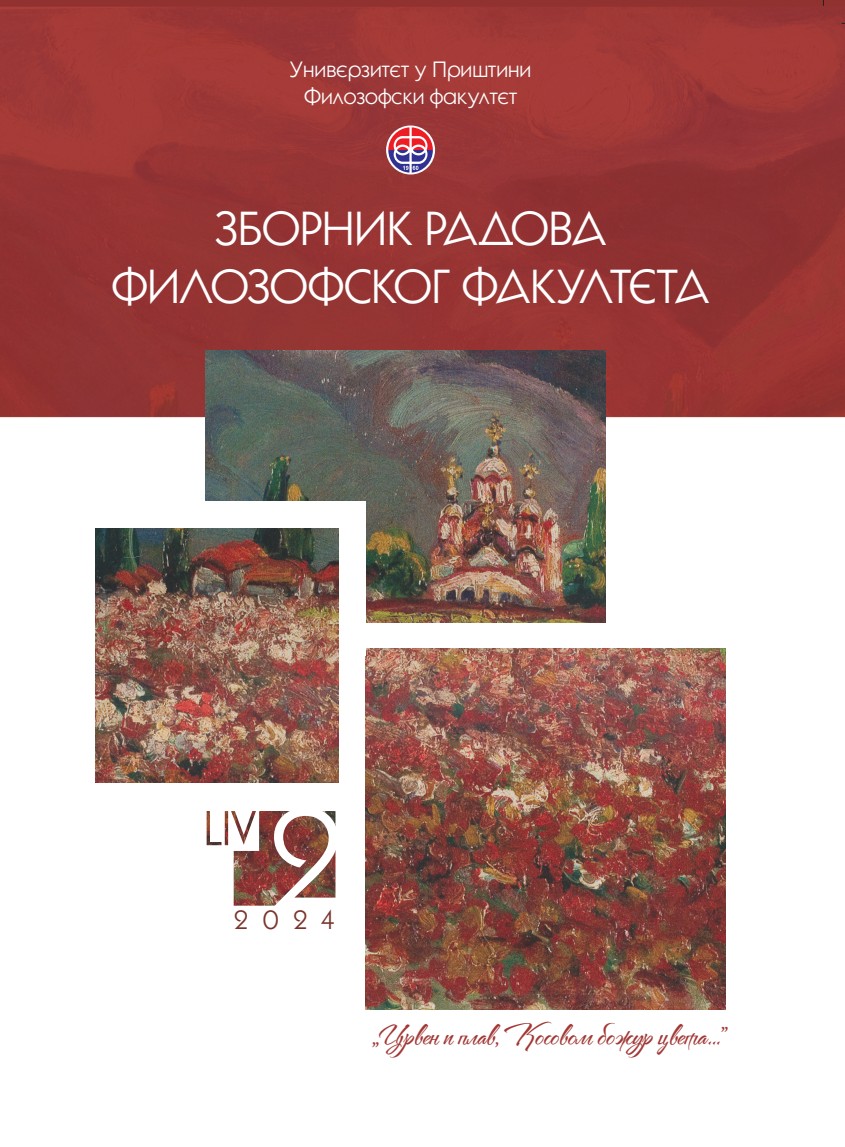Иконе зографа Хаџи Костадина Крстева у Добротину и Косовској Каменици
Icons of Zograf Hajji Kostadin Krstev in Dobrotin and Kosovska Kamenica
Author(s): Ivana Ženarju RajovićSubject(s): Theology and Religion, History of Art
Published by: Филозофски факултет, Универзитет у Приштини
Keywords: Dobrotin; Kosovska Kamenica; Hajji Kostadin Krstev; iconostasis; church art of the 19th century; Diocese of Raška and Prizren.
Summary/Abstract: In the churches of St. Dimitrije in Dobrotin near Lipljan and St. Nicholas in Kosovska Kamenica, there are iconostases whose icons were painted by the painter Hajji Kostadin Krstev from Veles in 1862. He worked on the territory of the Diocese of Raška and Prizren in the first half of the seventh decade of the 19th century, when he painted the church of the Devič monastery, created the iconostasis in the church of the Holy Archangel Gabriel in Veliko Ropotovo near Gnjilane, the iconostasis and wall painting in Dobrotin, as well as all icons, apart from those of the Great feasts, for the iconostasis in the church of Saint Nicholas in Kosovska Kamenica. Also, with the painter Ignjat from Veles, who helped him in painting of the church in Dobrotin, he created painted decoration for the throne of the miracle-working icon of Peć. The iconostases in Dobrotin and Kosovska Kamenica, as well as the one in Veliko Ropotovo, are modest three-zone wooden constructions. They were made according to the Balkan cultural model and zographic pictorial poetics, and they differ slightly from each other in terms of dimensions and the number of icons. Both iconostases have modest or no relief decoration. The iconostasis in the church of St. Demetrius in Dobrotin has only two throne icons and high parapets under them, the imperial doors that are not even painted, and north and south doors that are painted. Above the throne icons there are two rows of icons, arbitrarily arranged, with figures of saints and representations of Great feasts. At the very top of the iconostasis, there is a monumental cross with the crucifixion of Christ. On several icons in the higher zones, there were inscriptions, but only the one on the icon of the Shroud of the Holy Virgin is preserved and states that it was a gift from Milovan Rašić. The names of other donors are not legible. The iconostasis represents a unique whole with the wall painting.The iconostasis in the church of St. Nicholas in Kosovska Kamenica has a somewhat different appearance, but it was made and painted according to the same pictorial and dogmatic principles. It has five throne icons, the imperial and northern doors. In the second zone, there is a row of icons with the figures of the apostles, and above them a row of icons of the Great feasts, which are the work of Vasilije Djinoski. At the top, there is a painted Crucifixion of the Christ, set on the relief dragons. This paper presents in detail the iconography of all the icons, which were simultaneously compared to each other, as well as to the icons painted a year earlier in Veliko Ropotovo.
Journal: Зборник радова Филозофског факултета у Приштини
- Issue Year: 54/2024
- Issue No: 2
- Page Range: 263-284
- Page Count: 22
- Language: Serbian

